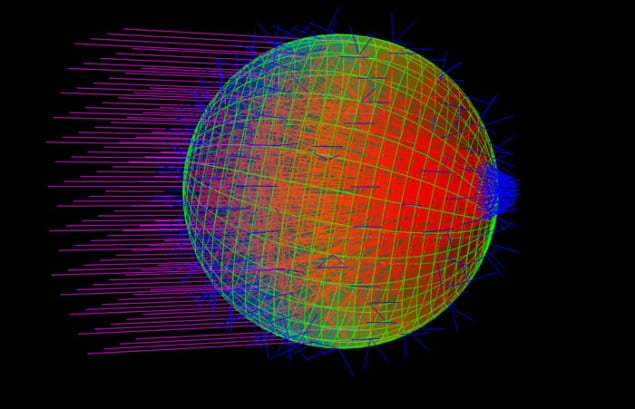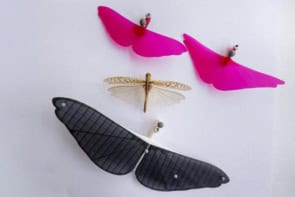
Microscopic organisms called cyanobacteria form tiny lenses similar to the human eye to detect light and move towards its source, an international team of scientists has found.
Cyanobacteria are single cell organisms that are similar to microbes that were around more than two-billion years ago, making them one of the longest continuous biological lineages. They are one of the largest groups of bacteria on Earth and are phototrophic, which means that they obtain energy from sunlight through photosynthesis. What’s more, the tiny microbes seek out sunlight and move towards it – a behaviour called phototaxis.
Illuminating question
“Phototaxis in cyanobacteria has been known for more than 50 years but it doesn’t look as though anyone else had really worried about the basic question of how the cell can get information on the direction of illumination,” explains lead researcher Conrad Mullineaux of Queen Mary University of London.
Mullineaux and his colleagues set out to study the phototaxis of the spherical cyanobacteria Synechocystis by observing its response to various light conditions. When exposed to a light source from one direction, the majority of the cells started moving towards the light within about a minute. When exposed to two equal-intensity light sources, from different directions, most of the cells moved to a point midway between the sources. This confirmed previous research, suggesting that Synechocystis can detect the position of a light source and control their movement accordingly.
We noticed the lensing effect more or less by accident
Conrad Mullineaux, Queen Mary University of London
The eureka moment came while the team was observing Synechocystis illuminated from one side. The researchers noticed something odd: the bacteria had an intense light spot on the opposite side of the cell from the light source and the direction of movement. Each cell seemed to be acting as a microscopic spherical lens focusing the light. Mullineaux says that although lensing is a very simple idea, “it never occurred to us, until we noticed the lensing effect more or less by accident”.
To test the idea that Synechocystis move away from the light spots towards the light source, the researchers used highly focused laser light. They found that when they created a light spot on one side of a bacterium, the cell moved in the opposite direction, away from the laser. “This shows that Synechocystis phototaxis is essentially a photophobic response to selective excitation of one side of the cell,” the researchers write.
Distinct patterns
Because the cyanobacteria have diameters of just 3 μm – about five times the wavelength of visible light – measuring the optical properties of the bacteria was challenging. Jan Gerrit Korvink and his team, at the Karlsruhe Institute of Technology in Germany, came up with a solution. They placed Synechocystis cells on a silicon disc coated in a photopolymer that hardens under light, and exposed them to ultraviolet light with a wavelength of 365 nm. Diffraction from the cells caused distinct patterns to form on the surface of the disc and these patterns were then characterized using atomic force microscopy.
“The light was found to be tightly focused on the back plane of a bacterium,” explains Korvink, adding that the spot had a diameter “smaller than the wavelength of the incoming light”. The team also modelled the optical properties of the cell and this showed that the cyanobacteria have a refractive index of 1.4 (see image). “What we don’t know is whether this value varies through the thickness of a bacterium,” Korvink explains. “That would have additional consequences for the way light travels through these organisms.”
Mullineaux says that the optical properties of other microbes should now be studied in greater detail. He adds that while some organisms act as lenses, others could behave as microscopic optical fibres.
The study is described in the journal eLife.



